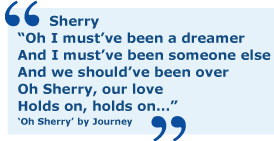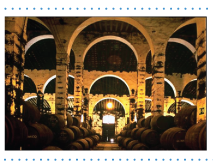|

Content Contributed by Kimberly Bricker, Imperial Beverage
Wine was originally fortified, or strengthened, to better sustain itself during the journey to those importing it. The addition of brandy or neutral grape spirit would kill off the yeasts, which are constantly in the process of converting sugars to alcohol. Once the alcohol by volume reaches 16-18%, yeasts die. Tthe remaining sugars are never converted into alcohol, and the natural sugars of the wine persist. Wines can be fortified at various stages in their fermentation, sweetened or colored with a variety of techniques. Different grape varietals can be used. Grapes can be dried. Wines can be boiled and reduced, cooked, aged in a solera, or aged in a boat that travels halfway across the world and back. They can be enjoyed immediately or aged for over 200 years.
 Port, Sherry, Madeira, Marsala, Malaga, Montilla-Moriles, and Vin Doux Naturels (VDN’s) are all Fortified Wines. Port, Sherry, Madeira, Marsala, Malaga, Montilla-Moriles, and Vin Doux Naturels (VDN’s) are all Fortified Wines.
Most people think of stuffy British old men drinking out of little glasses in a mahogany library with their pinkies out when they think of Sherry-if they think of Sherry. While that image may have relegated Sherry, as an old-fashioned wine, to the back of the cool class, that is only part of the picture. Both Christopher Columbus and Ferdinand Magellan filled their ships with Sherry when they set sail to discover the New World. Jackie Kennedy drank Sherry- and so did James Bond. The Beatles enjoyed Sherry and even traveled to Jerez and autographed some large casks. Tom Waits always enjoys his Sherry. Every top chef, including Feran Adria, Thomas Keller, Grant Achatz, Jose Andres, and Wylie Dufresne, touts the taste and pairing ability of Sherry. People in Spain drink Sherry with their meals, and chug it in celebration after winning a soccer match! But if you don’t like Sherry, and think it is a drink for your grandma, that just means more delicious Sherry for the rest of us to enjoy.
Today, Sherry is lauded by a small group from the culinary curious to expert epicurean leaders. Sherry is made in a wide variety of styles, sweetness levels, and alcohol strength. It is the least acidic and most aldehydic wine in the world! An Aldehyde is an oxidized alcohol and adds aromas of roasted nuts, caramel, and straw.

This legendary fortified wine is made in Jerez de la Frontera, Sanlucar de Barrameda, and Puerto Santa Maria in the Andalusia region of Southwest Spain. Palomino, Pedro Ximenez, and Muscat of Alexandria are the only three authorized grapes in the region. Palomino is the primary varietal and accounts for 95% of all vineyard plantings. The Jerez DO (Denominacion de Origen) is distinguished by its chalky porous Albariza soils. There are two main types of Sherry: Fino and Oloroso.
Fino has a final alcohol of 15.5%, is the finest quality, and ages biologically (in contact with the film of yeasts called flor).
Oloroso has a final alcohol of 18%, is lesser quality, and ages physiochemically (in direct contact with air).
LET'S MAKE SOME SHERRY!
Palomino grapes, and occasionally others, are pressed. This occurs most frequently with a bladder press. Acidification takes place if necessary, and then the wine is racked. Fermentation lasts three to seven days and takes place at 75-84°F/24-29°C. Wild yeast ferments the wine, as opposed to selected yeast strains  being inoculated into the wine. (Wild yeast fermentation results in a wine with more rose/floral/honey aromas, a wild rustic nature, and maderized/sherry aromas.) Malolactic fermentation occurs, and the whole process takes place mostly in stainless steel tanks. Now that the base wine is made, it is classified into Fino or Oloroso. Fino is the palest, clearest, and best and tends to come from the highest percentage of Albariza soils, free run juice, older vines, and delicately handled fruit. A base wine is classified as Oloroso when it is not the palest and clearest. Color, clarity, aroma, and flavor are all analyzed to determine what category of Sherry it will be. If it is not clearly one type or the other the wine can be classified as mosto sobretablas, or undecided. being inoculated into the wine. (Wild yeast fermentation results in a wine with more rose/floral/honey aromas, a wild rustic nature, and maderized/sherry aromas.) Malolactic fermentation occurs, and the whole process takes place mostly in stainless steel tanks. Now that the base wine is made, it is classified into Fino or Oloroso. Fino is the palest, clearest, and best and tends to come from the highest percentage of Albariza soils, free run juice, older vines, and delicately handled fruit. A base wine is classified as Oloroso when it is not the palest and clearest. Color, clarity, aroma, and flavor are all analyzed to determine what category of Sherry it will be. If it is not clearly one type or the other the wine can be classified as mosto sobretablas, or undecided.
Now for the fortification. For Fino, a half neutral grape spirit half sherry mixture is added, which brings the alcohol level up to 15-15.5%. Olorosos are increased to 18% alcohol by volume with the addition of neutral grape spirits. The aging process comes next, and this is one of the unique features of Sherry. In the Fino casks, a flor develops. This is a yeast in the same family of the yeasts that turn grape juice to wine, but a different strain (Saccharomyces Cerevisiae Beticus). This film of yeasts can only develop in a humid aerobic environment. Development is encouraged by seasoned barrels, absence of residual sugar, less than 16% alcohol, and a high acid wine. Flor ages the Sherry biochemically. It basically eats the acids and ethanol and converts them into aldehydes and fusel oils. Th e barrel is then aged within the solera system. This is a tiered system of stacked barrels with the youngest vintage put in barrels at the top. The last tier is actually called solera and all the younger tiers are called criaderas (nurseries). A simple solera can be composed of three of four rows of criaderas and a complex solera can contain as many as 14. Once the wine from the solera (oldest wine on the bottom row in this case) is drawn off (usually just 10-15% of the barrel) and bottled, it is replaced with wine from the first row above and then everything is moved down. The very top is filled up with the newest, youngest wine. At bottling, anywhere from 5-34% of the oldest wine can be bottled- but never morethan 35%. Bottling too much would weaken or dilute the whole solera. e barrel is then aged within the solera system. This is a tiered system of stacked barrels with the youngest vintage put in barrels at the top. The last tier is actually called solera and all the younger tiers are called criaderas (nurseries). A simple solera can be composed of three of four rows of criaderas and a complex solera can contain as many as 14. Once the wine from the solera (oldest wine on the bottom row in this case) is drawn off (usually just 10-15% of the barrel) and bottled, it is replaced with wine from the first row above and then everything is moved down. The very top is filled up with the newest, youngest wine. At bottling, anywhere from 5-34% of the oldest wine can be bottled- but never morethan 35%. Bottling too much would weaken or dilute the whole solera.
|
